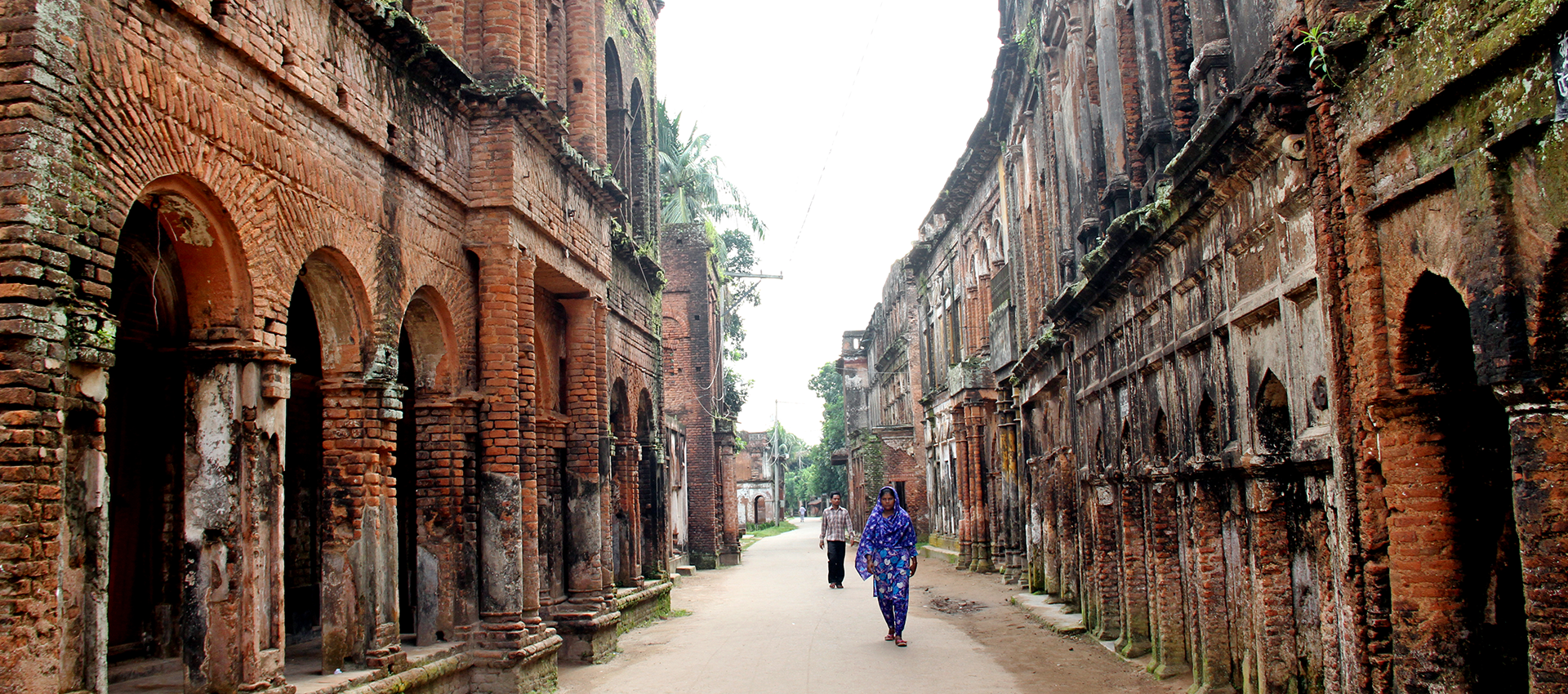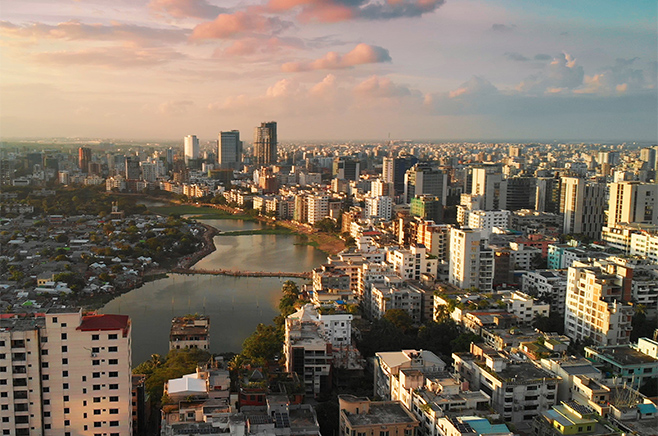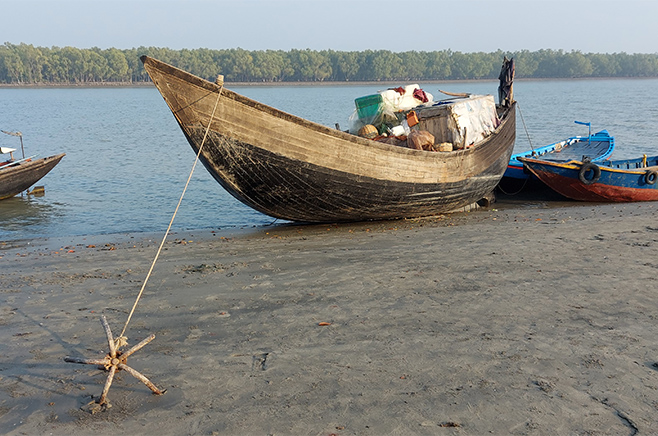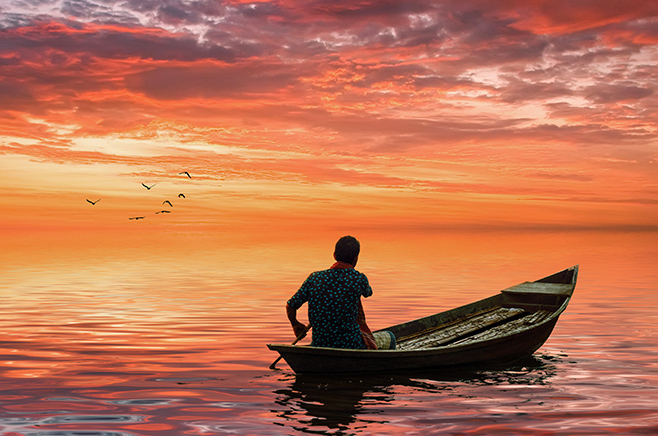
Buddhist and Mughal Heritages
- Home /
- Bangladesh /
- Natural Excursions /
- Buddhist and Mughal Heritages
Bangladesh, the center of Eastern South Asia, surrounded by Nepal, Bhutan, Myanmar and India, was the world’s oldest melting pot, has been visited and explored by different nations and they left their footprint, many of them is yet to be explored. Civilizations grew and flourished on the banks of rivers, religions and rituals also followed the rivers and then diminished here—Hinduism, Buddhism, Islam and then Christianity, all can be found here. Buddhism flourished in Bengal and even Lord Buddha visited the Pundra Nagar (present Mahastangarh). Atisha Dipankara was known as second Buddha who carried the Buddhist teaching to Tibet and China. Then Mughals came and discovered its richness and built many architectural structures to beautify the land. Due to heavy traffic, we suggest arrive Dhaka on Thursday evening, so you can get less traffic in the city and do sightseeing nicely the next two days.
Itinerary In Detail
-
1: Arrive Dhaka
The guide will welcome you at the outside gate of arrival terminal-2 (left side corner) of Hazrat Shahjalal International Airport, Dhaka and then transfer to your designated hotel. Depending on time, he may offer you to visit following places: Dharmarajika Buddhist Temple was established in 1960 by the initiative of Bishuddhananda Mahathera. It acts as the cultural and regional centre of Bangladeshi Buddhists. It houses the ashes of famous Buddhist scholar Atisha Dipankara called as Second Buddha and has a good collection of Buddha statues. Curzon Hall meant to be a town hall, was named after Lord Curzon –a Viceroy of India (1899-1905) who laid its foundation stone in 1904. A year later Bengal was partitioned and Dhaka became the capital of the newly created province of East Bengal and Assam. After the establishment of Dhaka University in 1921 it become part of the university’s science section and continues as such. Musa Khan Mosque, the three domed prayer hall, is one of the few Mughal structures on Bangladesh built in 18 th century. The mosque holds significant historical values as it is named after the son of medieval Bengal's one of the most prominent Baro-Bhuyans, Isa Khan's son Musa Khan. The structure was erected during the Mughal regime in Bengal by the grandson of Musa Khan, Diwan Munawar Khan. Dhakeswari Temple, built by King Ballal Sen in 12 th century, is the state temple of Bangladesh for Hindu Community. Some people believe the city named “Dhaka” after the temple.
Stay overnight in Dhaka. -
2: Buddhist Heritage and Ancient Capital Tour
Around 0700 hrs we will leave hotel for Mainamati located in Cumilla, 100 km away from Dhaka. Mainamati is an isolated low dimpled range of hills dotted with more than 50 ancient Buddhist settlements dating between 7 th -12 th centuries AD. It was part of the ancient Samatata division of Bengal and is the home of one of the most important Buddhist archaeological sites in the region. Visit Salban Vihara (monastery), Kutila Mura and Rupban Mura which are very important to study Buddhism. The recent excavation made the archaeological museum more attractive. A new Buddhist temple has been built there by the Thai Government, with a Lotus Bud on top is worth visiting. [Salban Vihara and the museum closed on Sunday full and 1 st half of Monday.] Then drive 90 km to Sonargaon –the ancient capital of Bengal on Turkish Sultanate period during 1280 AD. It was a historic administrative, commercial and maritime center in Bengal and the seat of the medieval Muslim rulers and governors of Eastern Bengal. The city was described by numerous historic travelers, including Ibn Battuta, Ma Huan, Niccolò de' Conti and Ralph Fitch as a thriving center of trade and commerce. It served as the capital of Sultan Fakhruddin Mubarak Shah, Isa Khan and the Baro-Bhuyan Confederacy. Panam Nagar, one of the most endangered historic sites in the world and is a subject of significant archaeological and artistic interest, which is also known as a Dead City. Most of buildings suffer from rising damp while biological and insect damage has affected the architectural woodwork. At present there are more than 50 buildings in both sides of a road established in the late of the 19 th century. The New York-based World Monument Fund included Panam Nagar in its World Monuments Watch List of 100 Most Endangered Sites in 2006. [Close on Sunday full and Monday 1 st half] The small one dome Goaldi Mosque was built in 1519 by Mulla Hizabar Akbar Khan during the Bengal Sultanate under the reign of Sultan Alauddin Husain Shah. The mosque is one of the more elegant and ornate sultanate-era mosques in the country.
You will feel the Bengali rural culture while visiting the Folk-Art Museum. The museum was established by Bangladeshi famous painter Joynul Abedin on March 12, 1975. There is a house in the premises called Boro Sardar Bari, was built by a rich man Gopinath in Bengali year 1330 (1023 AD). The Bangladesh Folk-Arts and Crafts Foundation converted the house to a museum. [Both the museum houses are closed on Wednesday and Thursday.]
Drive back to Dhaka in the evening for night stay. -
3: Dhaka –The City of Mughal Architects
Have breakfast and start from the hotel around 0730-0800 hrs. Today we will explore old part of the city and visit the following sites: Close on Sunday full and Monday 1 st half.] Bara Katara was built in 1644-1646 AD by Mir Abul Qasim, the diwan (chief revenue official) of Mughal prince Shah Shuja. It was intended to be Shah Shuja’s residence, but Shah Shuja endowed it to Mir Abul Qasim. Chota Katara was constructed in 1663 by Subahdar Shaista Khan to accommodate officials and Shaista Khan’s expanding family. Chhota Katra is slightly smaller than Bara Katra, but similar in plan and about 185 meters east of it. Since the shift of Mughal capital in 1713, Kataras started to lose their importance. Less than half of the structure remains, and it is in disrepair.The Department of Archaeology has been unable to take charge of the monuments owing to litigation and resistance from its owners. The owners have altered the original buildings with new construction. The Star Mosque known as Tara Masjid was built in the first half of the 19 th century by Mirza Golam Pir at Armanitola. The mosque is decorated with Japanese and English china clay tiles and used both methods of the Chinitikri application and outside with motifs of blue stars.The Mughal Fort, also known as Aurangabad Fort, is an incomplete but beautiful fort of 17 th century. The construction was started in 1678 AD by Mughal Subahdar Muhammad Azam Shah who was son of Emperor Aurangzeb and later emperor himself. His successor, Shaista Khan, did not continue the work, though he stayed in Dhaka up to 1688. Shaista Khan’s daughter known as Pari Bibi died here and he started to think the fort as unlucky, and left the structure incomplete. [Close on Sunday full and Monday 1 st half.] Nimtali Arch (known as Nimtali Deuri) was the gateway to the Nimtali Palace in 18 th and 19 th centuries. The palace was built around 1765-1765 as a residence for the Naib-e Nazim (deputy governor) of Dhaka in the Mughal reign. The arch is an example of Indo-Islamic architecture. A public museum showcasing the life of Dhaka's elite of Mughal era is now housed inside the arch's three floors conserving old photographs, utensils, apparels, and artifacts that were collected from inheritors of the period. [Visiting time is only on Friday and Saturday 1030-1630 hrs.] Take a rickshaw ride and enjoy the trip through the narrow streets of Old Dhaka. Walk through the Old Hindu Streets and taste the color, smell, sound and activities of the old town. This is one of the oldest areas of Dhaka, stretches along a narrow lane, lined with richly decorated brick buildings built during the late Mughal or Colonial period. You will find people making ornaments by shell and you can also enjoy live cooking which is very famous as Old Dhaka’s Street Food. The most beautiful Ahsan Manzil, also known as “Pink Palace” was the resident palace of Dhaka’s Jamindars, constructed in between 1859 –1872. After acquisition of Jamindari in 1952, they couldn’t maintain the expenses of the palace and left Bangladesh to Europe for better livelihood after our liberation war, and then the property occupied by illegal people. In 1985, Bangladesh Government acquired the palace and surrounding area, and has been designated as a national museum in 1992. [Close on Thursday full & Friday 1 st half.] Binat Bibi Mosque is the earliest surviving mosque in Dhaka, was built during the rule of the Sultan of Bengal, Nasiruddin Mahmud Shah (1435–1459). There is a stone inscription written in Farsi (Persian) at the north of the mosque describes that some 150 years before the arrival of Islam Khan during the reign of Sultan Nasiruddin Mahmud Shah I, a Persian merchant named Arkan Ali built the mosque with a capacity of 30-40 devotees. His beloved daughter Binat Bibi was buried at the north side of the mosque after a sudden death. Since then the edifice has been known as Binat Bibi Mosque. In the evening you may visit AARONG –the famous handicraft chain shop. The interesting thing is maximum products of this shop made by village women. So buying some souvenirs for your family and friends, you can help the villagers improvise their life as the organization’s motif.
Stay overnight in Dhaka. -
4: Depart Dhaka
After Breakfast, transfer to airport for your onward destination
4 Days From

Any Question?
Feel free to call our travel experts.
+977 9851189018, +977 9801089018
info@asiaticroads.com
4 Days From

Any Question?
Feel free to call our travel experts.
+977 9851189018, +977 9801089018
info@asiaticroads.com
4 Days From

Any Question?
Feel free to call our travel experts.
+977 9851189018, +977 9801089018
info@asiaticroads.com
Reviews
In my 2 week stay, John was very professional and took me around to experience all that Kathmandu and surrounding areas has to offer. Sites were seen and many locals were met through John’s network.

Steven Stone
TravellerIn my 2 week stay, John was very professional and took me around to experience all that Kathmandu and surrounding areas has to offer. Sites were seen and many locals were met through John’s network.

Steven Stone
Traveller4 Days From







